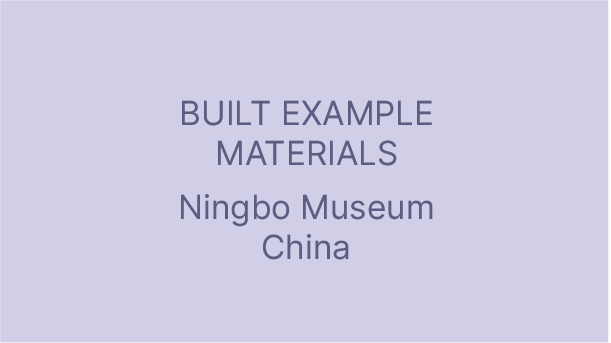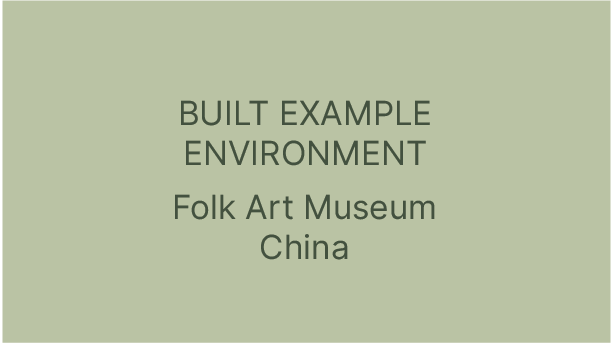Annikinkortteli
The block is a culturally and historically valuable building complex. Consequently, a five-page building guideline has been prepared for the area covered by the zoning plan. The zoning plan description stipulates the protection of the block as a significant urban ensemble and its preservation for residential use. In the block, all its buildings, facades, and courtyard area are protected. Moreover, the renovated housing block is now home to a co-living community and the inner courtyard serves as a cultural hub offering cultural public events.
Rautajärvi
Rautajärvi is a village in the Pälkäne region of Finland. Its community has placed a strong emphasis on sustainable living in all facets of their lives, which is architecturally most evident in their self-built recycled log houses. Reuse permeates through all their spaces, with materials from disassembled houses being used in new build aspects, old fittings finding use in a neighbour’s summer kitchen, or old bathrobes being broken down and woven into carpets.
Kotisatama
Kotisatama was cooperatively designed by Sivén & Takala architects and with the older inhabitants of the building. By working together with older adults through the planning process, apartments were made suitable for the needs of the different users. As well as this, the shared facilities in the building were planned together with the residents, ensuring that the users would be satisfied with the result once they moved in. The residents co-designed much of the building which has clear advantages for their comfort in their own apartments, but also in the common spaces located on the ground, first, and eighth floors. On the ground floor are the kitchen, dining room, hobby room, and bike shelters. On the second floor, the library, office, laundry and a guest room. The top floor houses two saunas, an exercise room adjoining a multipurpose sitting space with a fireplace. There is a greenhouse as well, whose greenery spills out onto the terrace during warmer seasons.
Jiangshan Bookhouse
The urbanisation process has led to the decline of rural communities, but it has also brought forth new perspectives on the village neighborhood, presenting it as a fresh venue for social interaction and cultural preservation. The project is the renovation of an old, abandoned house in Jiangshan Fishing Village, Gaochun, Nanjing. The architects maintained the original appearance and structure of the house while updating its internal functions and spaces while minimising environmental impact by reducing the use of virgin materials. A newly inserted bookcase with a patio and a glass tea pavilion facing the courtyard connects the interior with the exterior, filling the once dim and aged house with sunlight and nature. After the renovation, the building emphasises the importance of cultural preservation and has become the main public activity space in the village. At the same time, the community has become more vibrant and connected, providing residents with increased social infrastructure, supporting well-being.
Puukuokka
Puukuokka, which means a timber hoe in Finnish, is a pioneering housing design project, where three multi-storied apartment buildings form an affordable home for 186 households. The first finished building in 2015 was the highest wooden apartment building in Finland with eight storeys at that time. Apart from the concrete foundation and parking space, the buildings are constructed entirely from timber products (mostly CLT = Cross laminated timber). Puukuokka paved the way for eco-friendly large scale timber construction, and with the unique lease-to-own financing strategy, the apartments are available to a wide demographic of people.
Ningbo Museum
Ningbo Museum is a national-level museum that showcases Ningbo’s humanities, history, and art. The architectural design of the museum is inspired by mountains, water, and the ocean. It incorporates reclaimed Ming and Qing dynasty brick wall fragments collected from the local area and uses bamboo cast concrete walls instead of steel as finishing materials. The museum’s design integrates Ningbo’s regional cultural characteristics, traditional architectural elements, and modern architectural forms and technologies. Some spaces are designed to maximise the use of sunlight and the surrounding environment by taking into full consideration window openings, courtyard settings and entrance space planning. The building’s multi-path public spaces provide visitors with a rich spatial experience while adapting to various museum flow patterns. needed to keep it warm, thus reducing operative energy & CO2 impact. The low emissions attitude was taken further, though, with sustainably sourced building materials and cradle-to-cradle building strategies.
Vegetable House
Vegetable House is a tea store, vegetarian shop, and restaurant located in Nanjing, China. It is situated in a former Machine Tool Factory. During the renovation, Vegetable House preserved its original steel structure and incorporated a new spatial design. The façade of the store is made of glass, providing diners with a view of the outdoor scenery. Green plants are abundantly present throughout, and the flooring is made of birch, pine, and other materials, creating a delightful experience. The choice of other locally sourced virgin materials helps reduce embodied energy and carbon emissions.
Yixing Bookstore
Yixin bookstore is located in Dingshu Town, Yixing City and consists of a shared community space within a run-down neighborhood, as well as reusing pots and local masonry in a patchwork wall. The design draws on its context, communicating through the dual agency of its bookshelves, which line its glass walls. These shelves make the interior program inside visible from the outside, and also allow sunlight into the spaces, its intensity dimmed by filtering it through book pages.
Folk Art Museum
The China Academy of Arts’ Folk Art Museum is situated on the campus of the China Academy of Art in Hangzhou. Its main purpose is to promote traditional Chinese folk art, including bamboo weaving and wood carving. The design of the museum not only integrates well with the local folk characteristics but also takes advantage of the hilly tea garden location. On the exterior of the building, the roof is split into multiple parallelograms to accommodate the changing terrain, so that each space has an individual roof, which breaks up the massive building mass and creates a feel of a cluster of village homes. Inside the museum, the floor is designed as a continuous ramp, matching the original site's height difference. The choice of materials for the façade is another notable aspect of the design. Recycled tiles sourced locally are fixed with stainless steel wires, which reduces the amount of daylight entering the building and culturally reflects the elements of traditional dwellings.
Duo + Hervannan Keskusakseli
Hervanta Central Axis was designed by Reima and Raili Pietilä in 1979. The brief was to design a centre for Hervanta, a commuter town south of Tampere now Finland’s largest suburb with over 25 000 residents), to structure it both in terms of services and identity. The buildings are credited as examples of Finland’s rare postmodern architecture, and its unique brick structures informed some of the material palette of the surrounding buildings. The commercial centre was expanded in 2007 and the entire complex includes local shops and café's but also a church, health centre, library, youth space, cinema and gardens and acts as a key social, inclusive, sustainable transport and green infrastructure for the entire suburb.
Today Cafe
The project is situated in the former Nanjing light industrial machinery factory, which was constructed close to the remains of the Ming Dynasty city wall next to the Zhongshan Gate. The café now occupies the former electrician's house for the factory. The old house has been renovated, a sunroom has been added, and a small garden has been established. This space serves as a community hub, providing social infrastructure. This project exemplifies the impact of small-scale interventions in an existing setting and the transformation that can be achieved through imagination and adaptability. Retractable sunshades allow for dynamic adjustment of indoor lighting and temperature. Additionally, a variety of green plants add a touch of green infrastructure to the limited space. This renovation breathes new life into the old space, enhances the connection between the internal and external environments, and provides a sense of comfort for users.
Pikkufinlandia
Pikkufinlandia, or Little Finlandia, is a temporary building made to substitute some of the spaces of the actual Finlandia Hall while it undergoes its renovations. Through an innovative use of tree trunks as columns and designing for flexibility and disassembly, the building ensures that it will faithfully serve some of the original hall’s programmes, while also being adaptable enough to find new use on a new site when this function ends with the reopening of Finlandia Hall.
Kierikkikeskus
The Ii-River Delta was an important fishery and seal hunting hub in the Neolithic era, and the Kierikki Stone Age Centre is built to visualise and educate people about the cultural heritage of the area. Until the beginning of the 20th century, nearly all the common buildings in Finland were log framed, and the Kierikki area is the home of the earliest archaeological findings of sophisticated timber structures in Finland, dating back 5000 years. Kierikki Centre’s stepped pyramid shape, and traditional stacked log construction is a nod to architectural history. There is also a stone age village built next to the centre, displaying the lifestyle, dwellings, and hunting techniques of the time. The centre is built using local materials, local workforce, and honouring local history.
Confucius Temple
The Confucius Temple is located in the Qinhuai District, at the heart of Nanjing. It was the largest ancient imperial exam centre in China, where government officials were selected. The renovation of the Confucius Temple aimed to build the first "National Model Pedestrian Street". The renovation of the Confucius Temple considered natural resources, including designing visitor routes and retelling dug-up stories, which brings a modern tour experience to the old neighborhood. The building façade style of the entire block has been restored based on the traditional style, with some moderate innovation, in order to preserve its cultural value and ensure an environment that works for its users.
Lixiang Village
Lixiang Village is located approximately 60 kilometers from Nanjing city. The village is known for its canals and ponds, which are formed by rivers flowing through rice fields in the area. The village is also famous for its historic culture, characterised by well-preserved late Qing Dynasty buildings and a thriving blueberry planting industry. To cater to both visitors and residents, the renovation process of the project included the addition of a visitor service center, a villagers' activity center, and other facilities. These adaptive infrastructures enhance the spatial quality of Lixiang Village and promote inclusivity, community well-being, and a sense of belonging. The project also focuses on sustainability by utilising bamboo and preserving old buildings during the renovation process, thereby reducing energy consumption and carbon footprint.
Jiangshan Bookhouse
The project is the renovation of an old, abandoned house in Jiangshan Fishing Village, Gaochun, Nanjing. The architects maintained the original appearance and structure of the house while updating its internal functions and spaces while minimising environmental impact by reducing the use of virgin materials. A newly inserted bookcase with a patio and a glass tea pavilion facing the courtyard connects the interior with the exterior, filling the once dim and aged house with sunlight and nature. After the renovation, the building emphasises the importance of cultural preservation and has become the main public activity space in the village. At the same time, the community has become more vibrant and connected, providing residents with increased social infrastructure, supporting well-being.
Ningbo Museum
Ningbo Museum is a national-level museum that showcases Ningbo’s humanities, history, and art. The architectural design of the museum is inspired by mountains, water, and the ocean. It incorporates reclaimed Ming and Qing dynasty brick wall fragments collected from the local area and uses bamboo cast concrete walls instead of steel as finishing materials. The museum’s design integrates Ningbo’s regional cultural characteristics, traditional architectural elements, and modern architectural forms and technologies. Some spaces are designed to maximise the use of sunlight and the surrounding environment by taking into full consideration window openings, courtyard settings and entrance space planning. The building’s multi-path public spaces provide visitors with a rich spatial experience while adapting to various museum flow patterns. needed to keep it warm, thus reducing operative energy & CO2 impact. The low emissions attitude was taken further, though, with sustainably sourced building materials and cradle-to-cradle building strategies.
Vegetable House
Vegetable House is a tea store, vegetarian shop, and restaurant located in Nanjing, China. It is situated in a former Machine Tool Factory. During the renovation, Vegetable House preserved its original steel structure and incorporated a new spatial design. The façade of the store is made of glass, providing diners with a view of the outdoor scenery. Green plants are abundantly present throughout, and the flooring is made of birch, pine, and other materials, creating a delightful experience. The choice of other locally sourced virgin materials helps reduce embodied energy and carbon emissions.
Yixing Bookstore
Yixing bookstore is located in Dingshu Town, Yixing City and consists of a shared community space within a run-down neighborhood, as well as reusing pots and local masonry in a patchwork wall. The design draws on its context, communicating through the dual agency of its bookshelves, which line its glass walls. These shelves make the interior program inside visible from the outside, and also allow sunlight into the spaces, its intensity dimmed by filtering it through book pages. The bookstore aims to create a space that connects people within an aged community and employs some passive design methods to reduce energy consumption and achieve sustainability.
Folk Art Museum
The China Academy of Art’s Folk Art Museum is situated on the campus of the China Academy of Art in Hangzhou. Its main purpose is to promote traditional Chinese folk art, including bamboo weaving and wood carving. The design of the museum not only integrates well with the local folk characteristics but also takes advantage of the hilly tea garden location. On the exterior of the building, the roof is split into multiple parallelograms to accommodate the changing terrain, so that each space has an individual roof, which breaks up the massive building mass and creates a feel of a cluster of village homes. Inside the museum, the floor is designed as a continuous ramp, matching the original site’s height difference. The choice of materials for the façade is another notable aspect of the design. Recycled tiles sourced locally are fixed with stainless steel wires, which reduces the amount of daylight entering the building and culturally reflects the elements of traditional dwellings.













